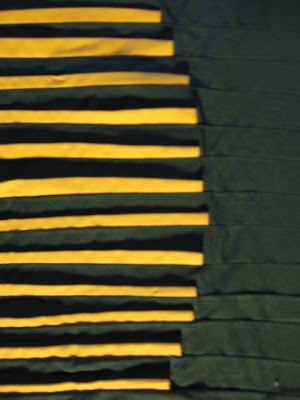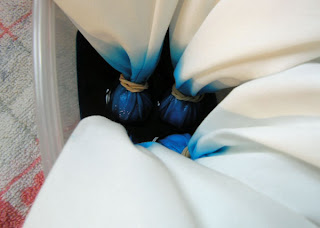Below is the pleated piece with the passe-partout draped over the stretcher bars.
In this picture, I laid the 2 other pieces over the bars and under the passe-partout... the fabrics have not been quilted yet. My dilemma is that I feel like the 3D effect is lost when I put the two pieces on top. So I am going to study these pictures a little before deciding how I will proceed.
I must confess that I am not happy with the passe-partout, and may need to do a little more work to get the opening to fit over the stretcher bars better... the opening appears to be too large, so I may need to make another one that has a smaller opening, or maybe use a contrasting fabric to make an inner border. But I am fascinated with this project... it is very different than anything I have worked on before, and I think it has given me a lot to think about, and I'm sure I will try this again!













































